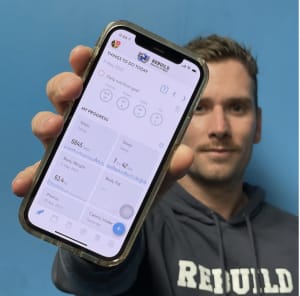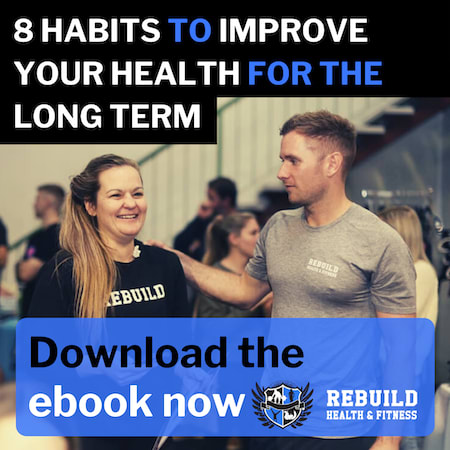
Tracking your nutritional intake or your weights and workouts will give you the power to manage your output and intake.
It gives you something to look back on, a figure to compare future results with, and generally provides a very organised feel to the situation you’re in.
Similarly, when trying to achieve a certain body goal, be it to lose weight or to gain muscle, there’s no doubt - tracking data is immensely beneficial. And while the boys have discussed ways and benefits of losing weight without tracking calories, it also goes without that measuring your progress is equally advised.
James and Sean touch on the importance of tracking data, progressive overload, and the number of steps you get in. They look into different ways in which you can track your progress and how important that first step is towards your dream body.
“There are plenty of metrics to record. If you’re looking to take things up a notch, then start recording something. How do you know if you’re getting better at running a 5k? Time it," says James.
Progressive overload in training
Comfort doesn’t get you anywhere – there needs to be a certain level of discomfort associated with anything that you do if you’re looking to make some progress in your training at the gym.
“If you want to get a better anything, you must have a level of progressive overload to it," says James. Progressive overload is increasing volume in a number of ways, including increasing load through weights lifted, time under tension, tempo or added rounds, reduced rest or additional training sessions.
Kramer et al (2002) write: “Progressive overload is the gradual increase of stress placed on the body during resistance training. In reality, resistance training is only effective for improving health and performance if the human body is continually required to exert a greater magnitude of force to meet higher physiologic demands. Thus, a gradual increase in demand of the resistance training program is necessary for long-term improvement in muscular fitness and health."
This enables members to build up strength over the weeks, gradually increasing the load without overloading or injuring themselves. It’s a scientific methodology that is proven to be effective and ensures our members get the most out of every session, see results at the end of the cycle while still being able to maintain proper technique.
"You can't do it any other way actually - it's not like this is just our opinion, it’s a fact. If you want to get stronger or you want to build more muscle, you must have some level of progressive overload and that can come in so many different ways. You need to understand, it needs it,” explains James.
This overload must be tracked so you know you’re progressing, otherwise, you’re only guessing your results.
Keeping track of your progress
Blindly hoping that you're making progress can be detrimental whether it's for a lift or calorie intake. You will likely make far greater progress by inputting your data, as James says "What gets measured gets managed".
This is why, regardless of the method you choose, it’s best to keep track of it be it through weights lifted, calorie counting, pictures of your progress, measuring yourself, or through keeping track of your steps.
- Tracking in nutrition
Though the boys believe that tracking your calories and macros shouldn’t be something you do long-term, they do, however, understand the importance of it for a short while to educate you on how much of what to consume, until you get the hang of it. This way, you can actually learn about food composition, macros, and calories.
“Even with protein, we can measure these things," James says.
"If you want to stimulate muscle protein synthesis (the build and repair of muscle mass), you need between three to six portions of protein per day based around 0.3-0.5 grams of protein stimulate growth. If I'm not measuring that, then I don't know what I'm getting.
"And even with muscle protein synthesis, you need 0.3 grams per kilo body weight to stimulate this. Some people that are heavy may have a protein shake and think they're doing the right thing but they're not getting enough protein to stimulate growth and repair so now they're just having protein. Where that extra little bit may have made all the difference to it, and you wouldn't know unless you were tracking it accurately."
- Steps
From a nutrition standpoint, it’s clear that those who move more, lose more. Even the most successful clients in terms of achieving body goals are those who move the most, the ones who get higher steps.
“I think it's like after 7,000 or 8,000 steps, there’s no further health benefit but it would be beneficial to your expenditure," he says. "So, it gets to a point where it's like 10,000 is better than 9,000, 11,000 is going to better than 10,000.”
- Body measurements and photos
While it seems simple, it's also crucial. But while it’s simple, there’s also a margin for human error when it comes to weighing machines, taking measurements, or photos, which you should be prepared for to avoid disappointment.
You could pull the measuring tape too tight one day, could be standing in bad lighting, or could have done anything different that brought about slightly different results but what matters most is that over time, you’re collecting data. It allows you to keep your progress in check, see what works for you and what doesn’t, and make changes accordingly.
Doesn’t matter where you start
New skills don't come easy. It takes time and effort, but the reward is always fruitful, same as is with tracking your progress.
Sean explains that tracking will feel uncomfortable in the beginning because it’s so new to you.
“I think the biggest thing that people struggle with is just introducing a new habit," explains Sean.
"For anything you introduce, there's going to be a period where it's going to feel uncomfortable because it's a new skill, so at the very least, just pick your lowest barrier to entry.
"When we talk about these sorts of tracking methods, whether it's downloading an app, getting a journal, photos, measurements, whatever, something is always going to be better than nothing and it can sort of open the doors for you to do other measurements down the track. And just remember, it doesn't matter where you start, as long as you're progressing. It doesn't matter where you start.”

